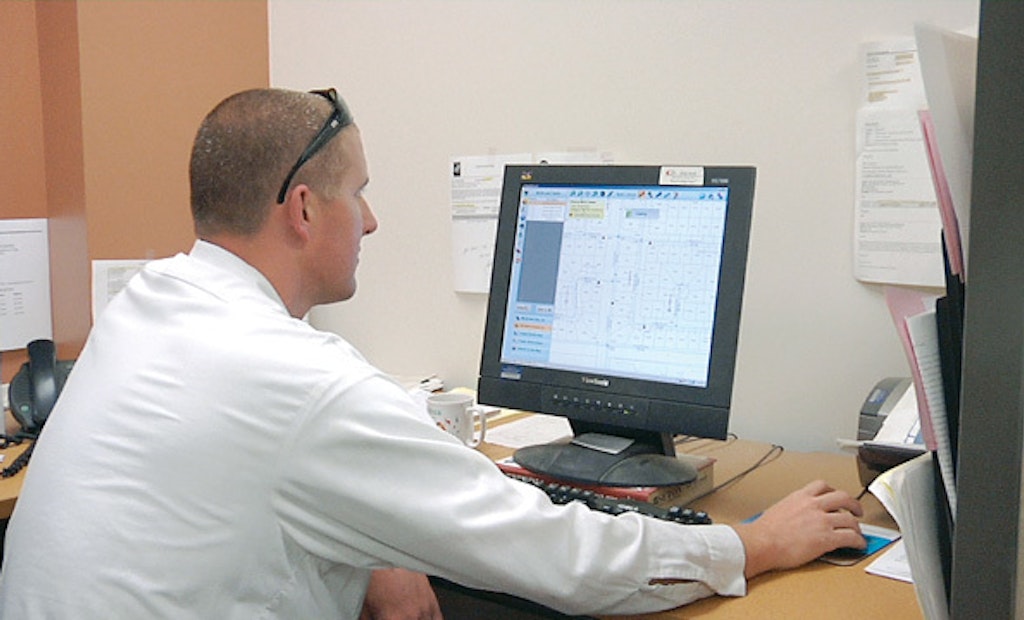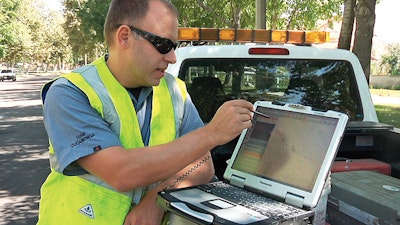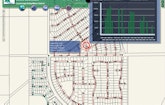
Interested in Inspection?
Get Inspection articles, news and videos right in your inbox! Sign up now.
Inspection + Get AlertsThe Cucamonga Valley Water District in Rancho Cucamonga, Calif., needed to improve on a location-based customer information program for work order management systems. Water crews had no way of knowing if leaks were on mains, service lines, or fire hydrants; sewer crews lost track of cleaning schedules, and the software also lacked costing features and analytic tools.
Darron Poulsen, customer service officer, had experience implementing work order management systems and led the search for a better system. “The key is to involve your field employees,” he says. “If you want them to use the application and enter information correctly, they must have an active role in the selection process.”
The critical factor was that the solution had to integrate with the district’s GIS mapping software from Esri. The team chose infraMAP Field Crew software from iWater, Dig-Smart 3.1 software from Dig-Smart, and the Cityworks GIS-centric computerized maintenance management system (CMMS) from Azteca Systems.
While the infraMAP field mapping platform and Cityworks environment appear similar, field employees chose infraMAP because they found it easier to access their service requests and work orders. Doing so launches Cityworks.
“Cityworks is the seamless, centralized database for all the information we collect,” says Poulsen.
Strategic vision
In 2008, the district hired Darrin Farmer, project manager from Weston Solutions in Roseville, Calif., to help manage system implementation and organizational change.
“Making them comfortable with the application was critical,” says Poulsen. “Darrin held regular training sessions. He could communicate from the field employee’s perspective, then talk database management with IT and GIS teams.”
Weston also designed a database for the production department to manage wells, pumps and motors, and configured infraMAP to support workflows. The district rolled out the program in small increments, targeting crews that caught on quickly, including a sewer cleaning team under sewer maintenance foreman Robert Koczko and a crew under water maintenance foreman Patrick Milroy.
“Those people became champions of the application and helped more field personnel become comfortable with it,” says George Rodriguez, water and sewer maintenance superintendent. “All of a sudden, paperwork orders began going away and we had some immediate successes.”
The sewer cleaning program is on a one-year cycle. When Koczko joined the district in 2003, he tore a street atlas into four sections to cover the 413 miles of sanitary sewers, two lift stations, and 7,700 manholes in the 52-square-mile service area.
“I called the sections coloring books because that is how we did 100 percent of our documentation,” he says. “When George wanted the history on an asset, I’d dig through stacks of paper in a file cabinet to find it. Now everything is available with the click of a mouse.”
Since it deployed Cityworks in 2008, the district has consistently achieved its one-year cleaning goal and has not had an overflow in a sewer main. “The sewer department is very proud of that accomplishment, and the documentation is in the computer to prove it,” says Koczko. The Cityworks application also helps users enter information into reports.
Accurate representation
The water department uses infraMAP to maintain its 700-mile distribution system and 22,474 valves. “The crew identifies the valves to be exercised on infraMAP and records the number of turns,” says Rodriguez. “After completing work in an area, they create an electronic work order and all the information is retained through Cityworks.”
Water and sewer crews also use infraMAP to correct as-built plans in the field. “Instead of noting the error on a piece of paper and hoping somebody will make the correction at a later date, they use the redline tool to indicate the change in infraMAP,” says Rodriguez. Cityworks then forwards the information to the engineering department for a prompt update.
While the district has mapped 99 percent of its assets, some remain unmapped or are mapped incorrectly. When field crews find them, they flag them via the redline tool for the GIS team to review and correct. The asset maintenance history Cityworks creates will enable the district to identify and monitor problems and make informed decisions on whether to repair or replace pipes that have exceeded their life expectancy.
The district measures accountability in terms of efficiency rather than dollars. “It’s about communication across departments and the fact that nobody loses information anymore,” says Poulsen. “We also don’t duplicate work because Weston helped us develop an electronic operations dashboard that allows personnel throughout the district to access real-time information and communicate the work being done in the field. It’s a real time- and labor-saver in every respect.”
Service alerts
Another timesaver, Dig-Smart, enables workers to take electronic, mapped underground service alert tickets into the field, insert notes and comments, attach photos, and post the contents to the database.
“When an alert arrives, it creates a work order in Cityworks that is completed using Dig-Smart,” says Poulsen. “The application runs on three field employees’ laptops, and supervisors access the Dig-Smart management tool from their desktop. They can review the history of when it was done, who did it, and wwcreate reports. It’s all at their fingertips instead of sitting in a file cabinet.”
To further improve customer service, the district is considering a Web-based interface for residents to request services and report problems. The tool would include the ability to report problems by uploading images of them from smartphones.
“We’re also working on integrating alarms and equipment run times in the field from SCADA to create work orders and drive our production and treatment departments’ maintenance programs,” says Poulsen. “As our strategic vision continues to grow, Cityworks and infraMAP provide the tools to help us realize our objectives.”







